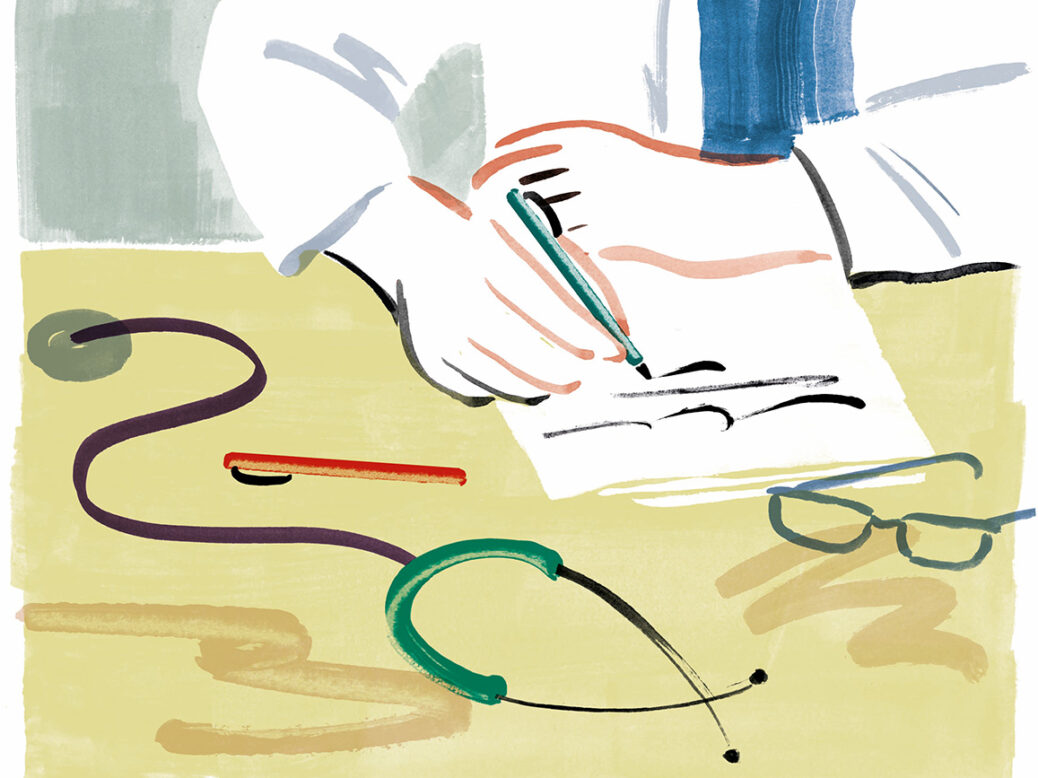 Illustration by Charlotte Trounce
Illustration by Charlotte Trounce
Theo wanted me to sign him off sick. “I’ve had this at various times in my life,” he explained. “I just can’t help myself – it’s an overwhelming urge to steal.” His eyes had a beseeching look. “But it’s serious now: these days I’m working in care.”
I will admit to initial scepticism – people in trouble sometimes attempt to recruit doctors to aid their defence. But Theo hadn’t been caught. It would end his career, though, were he to be found stealing from vulnerable adults in his care.
“I’ve taken myself out of work.” He shook his head vigorously. “It’s so stupid – I don’t even want the things. I don’t need them. I honestly don’t know why I do it.”
Kleptomania is…
 Illustration by Charlotte Trounce
Illustration by Charlotte Trounce
Theo wanted me to sign him off sick. “I’ve had this at various times in my life,” he explained. “I just can’t help myself – it’s an overwhelming urge to steal.” His eyes had a beseeching look. “But it’s serious now: these days I’m working in care.”
I will admit to initial scepticism – people in trouble sometimes attempt to recruit doctors to aid their defence. But Theo hadn’t been caught. It would end his career, though, were he to be found stealing from vulnerable adults in his care.
“I’ve taken myself out of work.” He shook his head vigorously. “It’s so stupid – I don’t even want the things. I don’t need them. I honestly don’t know why I do it.”
Kleptomania is rare. I’d never encountered a case in 30-odd years in practice. But the more Theo explained, the surer I was that this was what he was experiencing. The first description, by the Swiss psychiatrist André Mathey in 1816, still holds good: compulsive acts of stealing without motive or necessity, usually impulsive and the culmination of an overwhelming internal tension that dissipates as soon as the theft occurs.
Nineteenth-century doctors tried to explain the condition in a succession of ways, many with a female bias such as menstruation, menopause or “hysteria”, because kleptomania affects two to three times as many women as men. The advent of a new kind of shopping experience in the latter part of the 19th century generated the intriguing concept of “department store atmospherics”. These glittering modern emporia were supposed to stimulate uncontrollable avarice in susceptible customers. This led to a belief that kleptomania was an affliction of high-society women, those being the clientele most frequently apprehended. But “department store atmospherics” failed to account for a key feature of the condition. The items stolen would invariably be trivial and could easily have been afforded by the wealthy shoplifter. When their homes were searched, hoards of goods would often be discovered that had rarely even been unwrapped.
The development of Freudian psychoanalysis birthed new ways of thinking. To Freud and his acolytes, many aberrant behaviours could be understood in terms of conflicts between social norms and repressed infantile drives, frequently with sexual undertones. Kleptomania was a fertile testing ground for these theories, and a plethora of papers appeared describing how stolen objects symbolised phalluses, breasts or the female pudendum. Kleptomaniac compulsions were viewed as eruptions of frustrated primitive desires from deep within the unconscious.
Later, as biomedical psychiatry advanced in the latter half of the 20th century, parallels with other impulse-control disorders such as gambling addiction or alcohol dependency began to be drawn. The kleptomaniac brain’s reward circuitry, mediated chiefly by the neurotransmitters dopamine and endorphin, is stimulated by the act of successful stealing, a powerful self-soothing antidote to psychic distress. And the compulsive nature of kleptomania has features in common with obsessive-compulsive disorder (OCD), in which certain behaviours are helplessly repeated in attempts to quell sudden anxiety.
Treat yourself or a friend this Christmas to a New Statesman subscription from £2 per month
The development of psychopharmacology has led to potential treatments. Several antidepressants have efficacy in kleptomania, and drugs that block the effects of endorphins can help to break the association between unwanted behaviours and relief from psychological distress. Newer forms of psychological therapy such as cognitive behavioural therapy (CBT) can strengthen the ability to control compulsions.
I started Theo on medication and referred him for CBT. He returned for review recently, reporting a significant reduction in the strength of his compulsion. Neither he nor I are yet sure whether it would be wise for him to return to care work. Kleptomania raises fascinating questions about the limits of criminal responsibility, but a breach of trust is a breach of trust, whatever the underlying reason.
[Further reading: Rewilding Rory Stewart]
Related